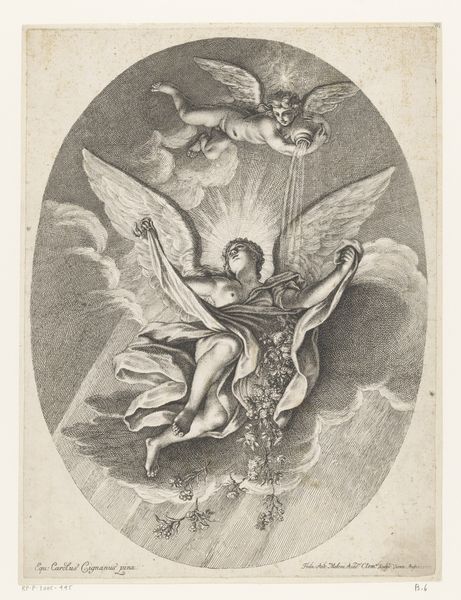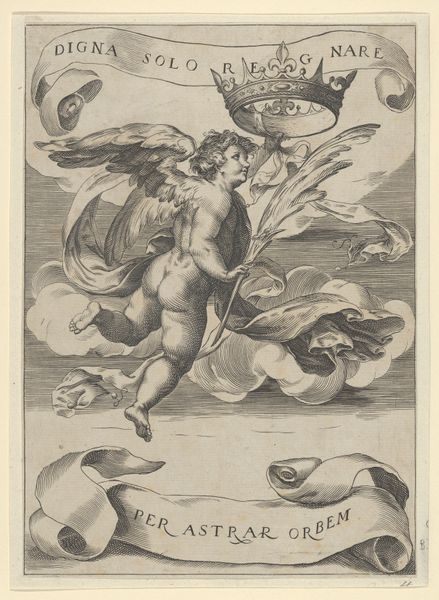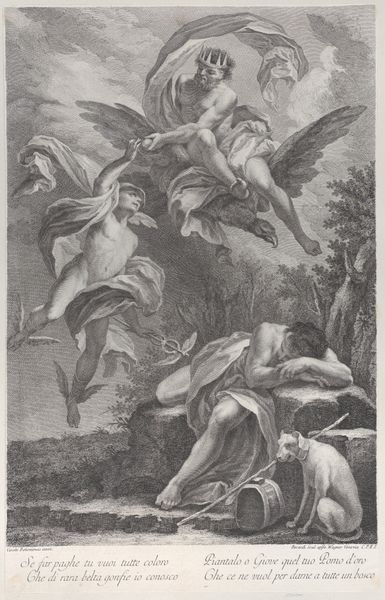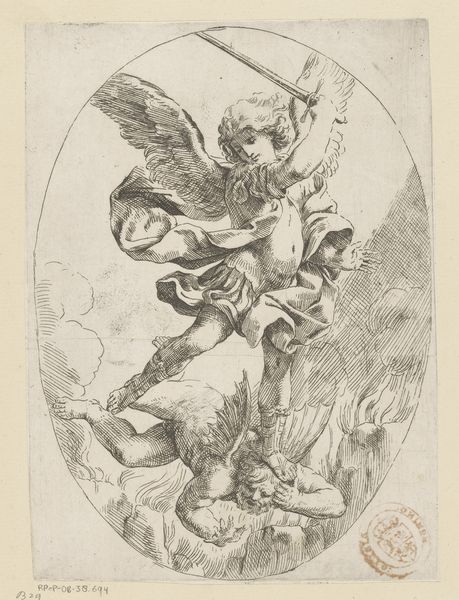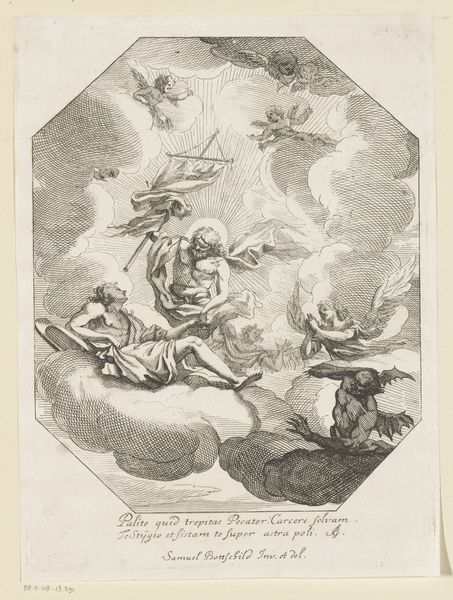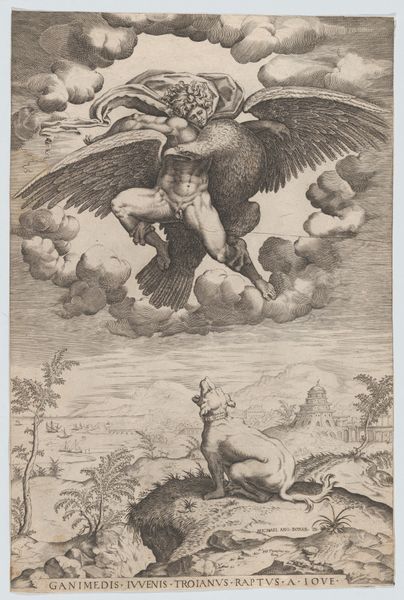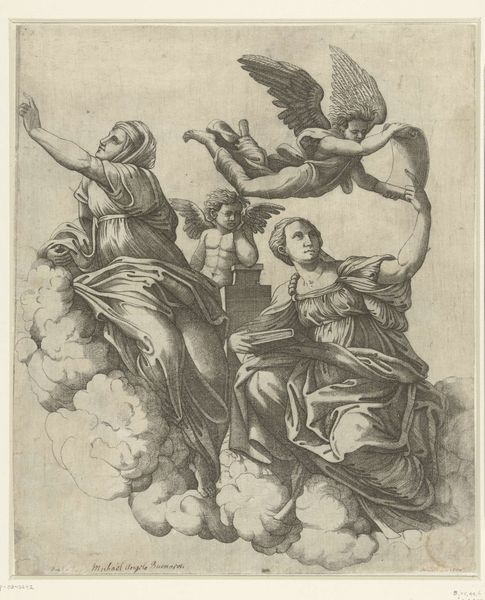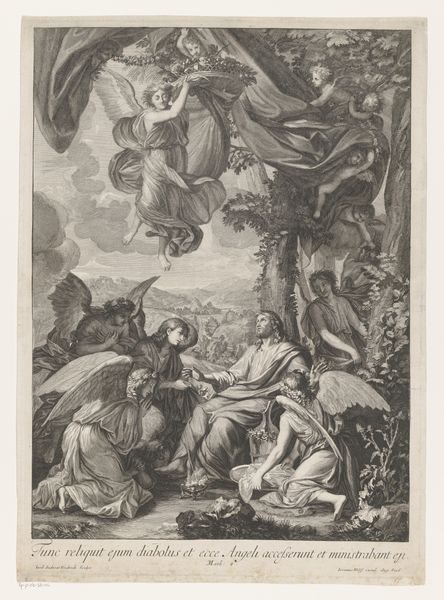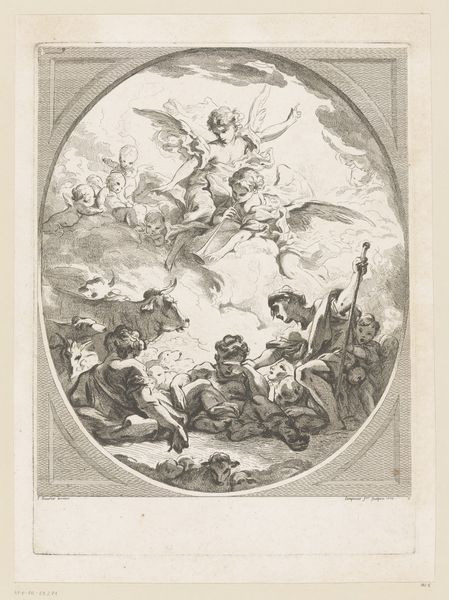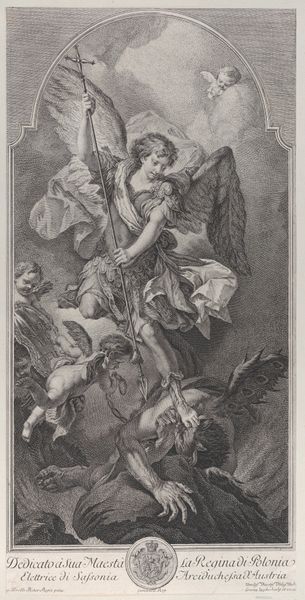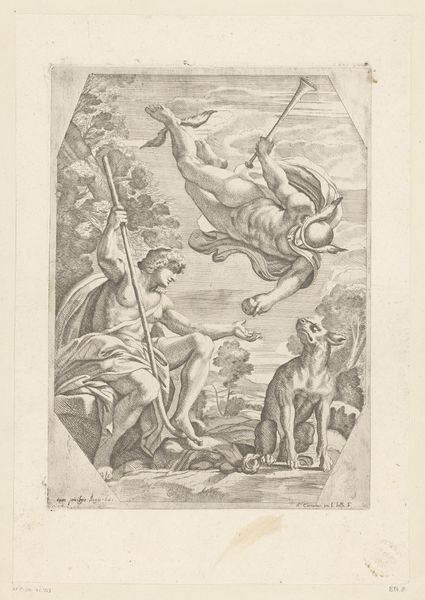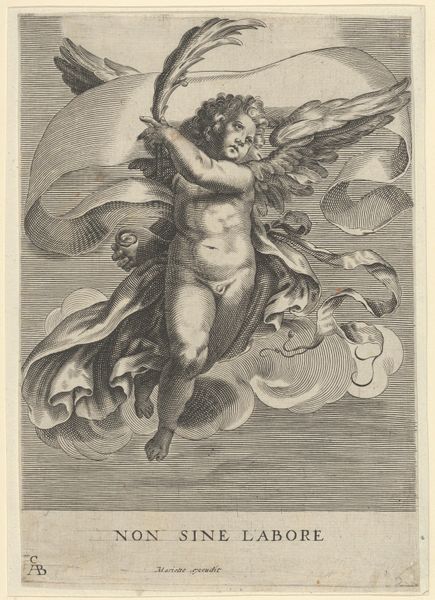
engraving
#
allegory
#
baroque
#
old engraving style
#
figuration
#
line
#
engraving
Dimensions: height 329 mm, width 219 mm
Copyright: Rijks Museum: Open Domain
Editor: This engraving, "Heilige Bruno ten hemel opgenomen," made sometime between 1647 and 1714 by Sébastien Leclerc I, depicts Saint Bruno being carried to heaven by angels. The lines are so delicate and precise, giving it almost a dreamlike quality. What historical factors influenced this depiction of Saint Bruno's ascension? Curator: Well, let’s consider the period. This work falls within the Baroque era, a time when the Catholic Church was actively promoting itself through dramatic and emotionally engaging art as part of the Counter-Reformation. Do you notice the cherubic figures, the theatrical poses, and the overall sense of ascension? It's meant to inspire awe and reaffirm religious faith. Editor: Yes, it's very theatrical. So, the image functions, at least in part, as propaganda for the Church? Curator: Precisely. Leclerc's work participates in a visual culture intended to reinforce Catholic doctrine and celebrate its saints. Note how Saint Bruno is elevated above the clouds, surrounded by cherubs. What message do you think this imagery conveys to the viewer about the Church’s view of him? Editor: It suggests his supreme holiness and direct connection to heaven. So, it’s not just a record of an event, but an active construction of his image and the Church's power. I had thought it was a simply representation of Bruno's spiritual ascension but, understanding the historical context, its political underpinnings become clearer. Curator: Indeed. Considering how artistic choices are impacted by cultural and socio-political forces enables us to delve deeper into how meanings are generated and how visual rhetoric constructs collective beliefs. Editor: It's fascinating how historical perspective transforms how you view a work of art! Now I recognize more clearly how Leclerc's composition participates in image-making practices to emphasize certain religious ideals of the Baroque period.
Comments
No comments
Be the first to comment and join the conversation on the ultimate creative platform.

